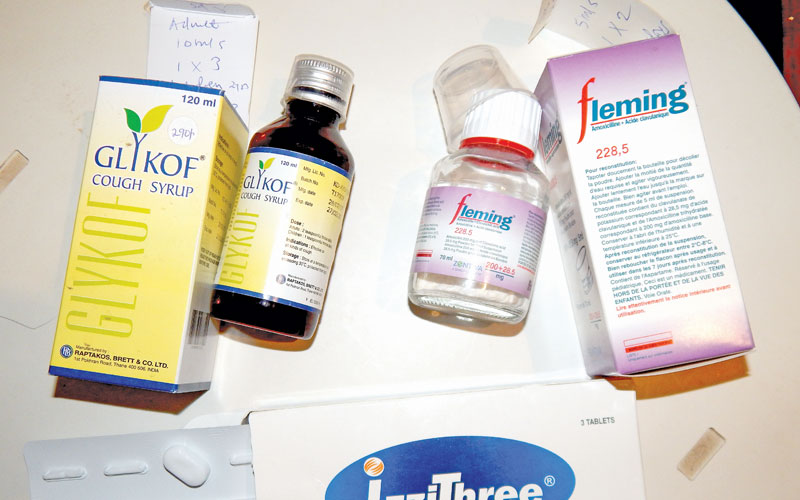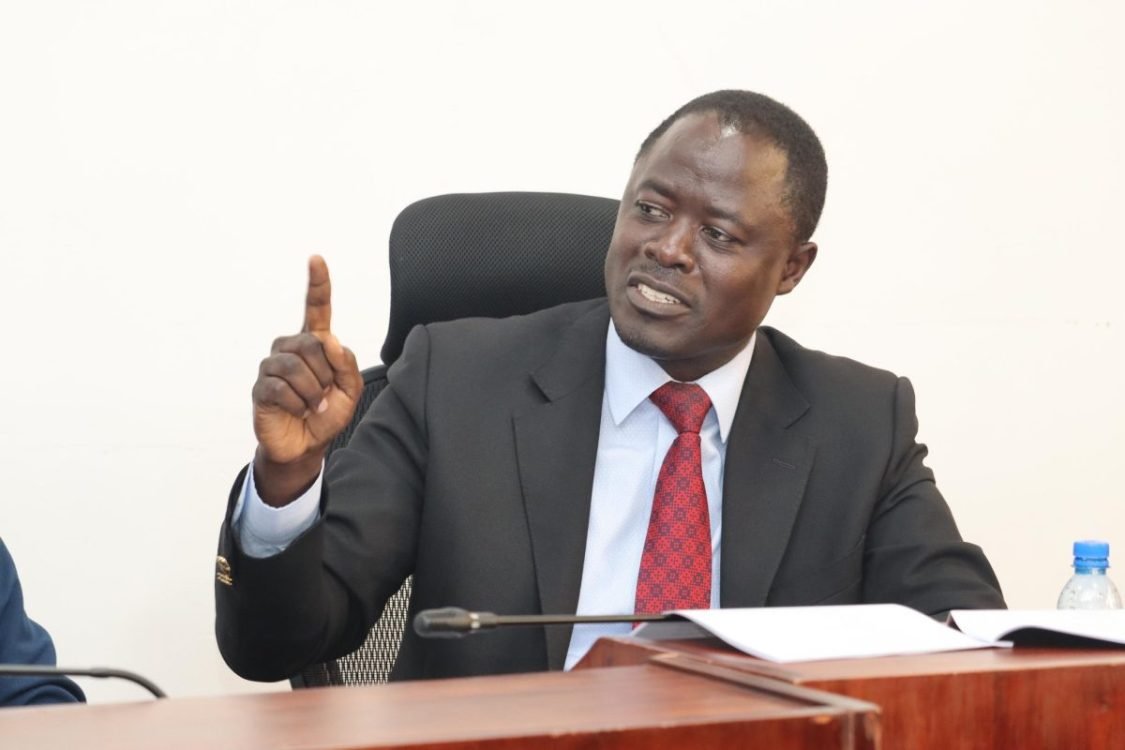Over the counter drugs fuel deadly antibiotics resistance

Lilian Kaivilu @liliankaivilu
The pharmacy I walk into one Tuesday afternoon is part dispensing chemist and part medical consultancy. On this day, I pose as a mother of two.
I am coughing and in search of drugs to get rid of this persistent cough that has besieged my son and me for days.
“Can I get an antibiotic for this persistent cough? And another one for my son who has a similar kind of cough?” I ask one of the three pharmacists. Interestingly, no one goes in or comes out of the consultation room for the 30 minutes I spend at the place.
The pharmacist hands me a tablet. Without telling me the price or the name of the drug. “Just take it first. It will ease your cough then we can talk later,” he says.
I look up to ensure it is a certified pharmacy by the Pharmacy and Poisons Board (PPB). It is licensed, with the number pinned right above the payment counter. The pharmacist asks me about the nature of my cough. “It is a productive one,” I reply.
And without asking about the details of my child’s illness or seeing the child, he prescribes three types of drugs: Azifast-500 Azithromycin tablets, Fleming Amoxicillin +Clavulanic acid 228.5 powder for oral suspension and a 120ml of Glykof cough syrup, at Sh750, Sh290, Sh300, respectively.
I bargain and he quickly offers to replace my first antibiotic (Azifast-500 Azithromycin tablets) with IzziThree Azithromycin Tablets B.P 500mg, a more affordable option that costs Sh150.

The price difference is Sh500. When I ask what sets them apart, he says only the manufacturer. I am still doubtful and even point at the consultation room, asking if I could first get professional advice from the doctor. He objects and immediately advises me to share the cough syrup with my child if I cannot afford all the drugs.
This is just one of the experiences Kenyans undergo in getting treatment. Over the counter medication or self-medication has been blamed for antibiotics misuse, one of the causes of antimicrobial resistance (AMR); AMR is the ability of bacteria, fungi or virus to resist effects of medication meant to treat them.
Dr Karim Wanga, a regulatory pharmacist and AMR focal point person at PPB says the practice is often fueled by patients trying to avoid consultation costs at health facilities. “In Kenya, most patients are unable to afford a doctor or healthcare provider. Hence, their first point of contact is a pharmacist,” he says.
He also points out that health-seeking behaviour by parents worsen AMR in children, even when they do not need to give children antibiotics for viral or mild bacterial infections.
“Paediatricians say mothers demand for antimicrobial reagents for their children for viral infections,” he says.
Prof Sam Kariuki, director of research and development at the Kenya Medical Research Institute (Kemri) cautions that most body organs of children are not fully developed, thus it may be difficult for them to synthesise some microbials in antibiotics.
Some banned antibiotics for children under five years include chloramphenicol, used for the treatment of cholera, typhoid fever and meningitis due to its high toxicity levels; Tetracycline for multiple infections such as malaria and cholera; and ciprofloxacin, popularly known as Cipro, which can be toxic to the liver.
Besides the misuse of antibiotics, AMR can also be caused by sharing drugs, using antibiotics for viral infections such as colds and flu and failure to follow professional advice when taking antibiotics.
The World Health Organisation (WHO) says malaria, tuberculosis (TB), gonorrhoea, urinary tract infections and HIV/Aids are some of the diseases that have become resistant to antibiotics.
In 2014, for instance, the health agency reported 480,000 new cases of and 230,000 deaths from multi-drug resistant tuberculosis, a type of TB that is resistant to two most powerful anti-TB drugs.
If not contained, the number of deaths from AMR might rise to 10 million by 2050, says WHO.
Prof Kariuki says the country has a long way to go in addressing AMR. Fast-growing populations, coupled with poor sanitation, especially in urban areas are some risk factors.
“AMR can be caused by overuse of antibiotics when treating common infections such as mild food poisoning, which last not more than 36 hours.
This can also happen when a patient decides to use high-end antibiotics to treat mundane infections, either because they are available or affordable,” he explains.
In 2017, the country launched the National Policy on Prevention and Containment of AMR, with the aim of reducing its burden while ensuring prudent use of antibiotics.
Dr Rudi Eggers, WHO Representative to Kenya, says nine countries in Africa have functioning multisectoral working groups on AMR and 19 countries have enrolled in the Global AMR Surveillance System (GLASS).
“Twenty-four countries have legislation on the prescription and sale of antimicrobials for human use and six have national monitoring systems for consumption and rational use of antimicrobials in human health.
Together, we need to accelerate action to reduce the increasing prevalence of drug-resistant infections,” said Eggers.
In the country, Wanga decries limited human resource required to ensure compliance in pharmacies across the country. There are about 70 regional inspectors spread across the 47 counties, consequently, the PPB plans to partner with the counties to address this shortage.
“As an institution, we have deliberately decided we are not going to use arrests. We have used that approach before to address illegal pharmacists and we think it may not have been very effective.
We have decided to instead engage professional bodies such as the Pharmaceutical Society of Kenya, Kenya Pharmaceutical Association and Kenya Medical Association towards self-regulation.”
He also recommends the adoption of Universal Health Coverage (UHC) to protect many patients, seeking over the counter drugs, without any professional prescription.
“With a fully functional UHC, patients will be able to go to a hospital, access a doctor, get a prescription and be able to get their medicines within the same facility. They will not need to a private pharmacy,” says Wanga.








